In Business Since | License #
In Business Since | License #

An insulation upgrade is a smart investment. Insulation slows the movement of heat: from inside to outside in winter; from outside to inside in summer. An insulation upgrade can put an end to rooms that are too hot or too cold at certain times of the year. It can also shave hundreds of dollars off your heating and cooling expenses every year.
Most homes have too little insulation and too many air leaks. Properly installed insulation upgrades can take care of both problems. But what type (or types) of insulation will work best in your house, and where does your house need insulation the most? Read on to get the answers, or call in your local Dr. Energy Saver dealer today to have a personalized discussion about your home energy needs.
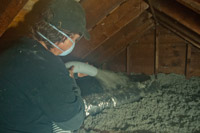
Cellulose insulation (R-3.8 per in.) is made from recycled newspapers that are shredded and then treated with chemicals to be noncombustible and mold-resistant. This blow-in insulation is frequently used in attic insulation upgrades, but can also be blown into wall and floor assemblies. Learn more about the benefits of installing cellulose insulation.
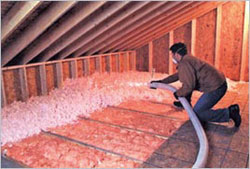
Loose-fill fiberglass (R-3.4 per in.) is made from fine glass fibers, just like fiberglass batt insulation. Like cellulose insulation, loose-fill fiberglass is typically installed in attics, using special blowing equipment.
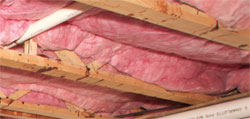
Fiberglass batts (R-3.2-3.8 per in.) come in different thicknesses and widths, sized to fit between studs or joists. Batt insulation is best in enclosed cavities; they shouldn’t be used in moist areas like basements and crawl spaces. Batts lose R-value when wet or compressed; they can be difficult to install correctly.
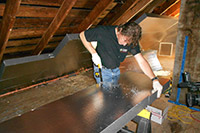
Rigid foam insulation (R-4 to R-6.5 per in.) is manufactured in the form of flat, lightweight panels that are available in different thicknesses and foam types. Because it won’t compress or degrade when exposed to water or high humidity, rigid foam board is ideal for insulating basement or crawl space walls. It can be used elsewhere as well.
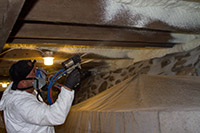
Spray foam insulation (R-4 to R-6.5 per in.) is also known as Spray Polyurethane Foam, or SPF. Disposable cans of “one-part” spray foam are available for filling and sealing cracks and gaps. Two-part spray foam is applied by professional installers, using special equipment that blends two liquid solutions right at the application nozzle. The resulting chemical reaction creates an expanding foam that seals, fills and insulates in a single step. Closed-cell spray foam forms an air and moisture barrier as well as a thermal barrier. Spray foam applications can be used to seal and insulate ductwork as well as entire wall, roof and floor assemblies. Learn more about choosing spray foam - find out which type is best depending on the application.
Need insulation services? Contact a Dr. Energy Saver expert in your area. Schedule a free insulation inspection today.
Looking for a price? Get a no cost, no obligation free estimate.